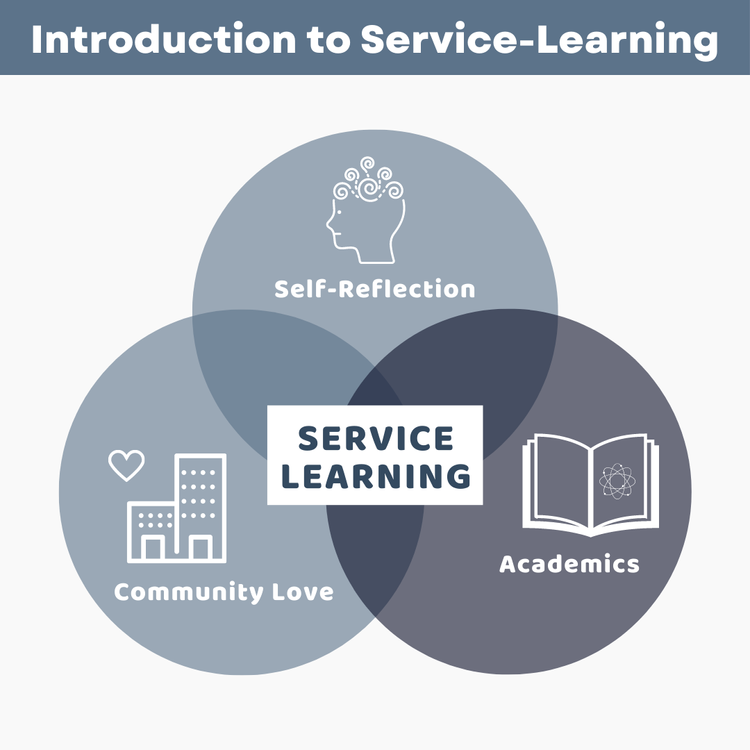




Service-Learning is form of experiential education where learning occurs through a cycle of action and reflection as leaders seek to achieve real objectives for the community and deeper understanding and skills for themselves. Vanderbilt University
Service Learning Supports for Students
Self Reflection
Personal Development
Critical Thinking
Social-Emotional Wellness
Community Love
Meaningful Service
Civic Engagement
Sense of Belonging
Academics
Learning Objectives
Knowledge & Skills Acquisition
STEAM Education
Service-Learning Stages
Reflect: examine thoughts, feelings and actions throughout the service-learning process
Investigate: identify and analyze a community concern, existing resources, personal interests, and individual readiness
Plan: design a service plan that describes the timeline, roles, responsibilities, goals and required resources, knowledge and skills
Take Action: engage in learning, provide community service, monitor progress and make adjustments
Evaluate: measure progress, evaluate impact and analyze effectiveness
Share: demonstrate the results of learning and the impact of service
Celebrate: honor the service team by recognizing their efforts and intention to improve the community
Types of Service
Direct Service is hands on help to people or the planet - like handing out meals or cleaning up a park.
Indirect Service is work performed separate from the people or cause supported – like fundraising or knitting blankets.
Research is finding out information in order to take action – like collecting scientific data or conducting surveys.
Advocacy is when you speak up for something you believe in – it could be live in a public setting, in-print or online.
